The Cost of Compliance – Part 2

In our last newsletter, we talked about some of the internal activities an A/E firm should perform to support their FAR compliance and development of an accurate overhead rate. These activities include developing the necessary policies and procedures, performing monthly reconciliations, reviewing costs for FAR compliance both as they are incurred and periodically throughout the year, and preparing an analysis of executive compensation. We now find ourselves in the middle of what is affectionately called “busy season” for CPA firms, and I can tell you from personal experience, that name is well deserved. Let’s turn our attention to some of the activities that A/E firms should perform in preparation for an overhead audit or submittal of an overhead schedule to a state DOT, and some of the activities a CPA firm performs as part of the audit.
Audit Preparation
In order for an overhead audit to be successful, what is required is excellent coordination between the CPA firm and A/E firm in all stages of the audit. An overhead audit takes a lot of work – for both the A/E firm and CPA firm – and this work starts long before audit fieldwork begins. Here are a few of the activities the A/E firm should perform to get ready for the audit:
- Obtain the audit request listing – Commonly referred to as a PBC (Prepared by Client) list, this is a road map to what the CPA firm needs in order to complete the audit. Early discussions of this list should take place to ensure both parties understand their responsibilities and expected timing. Starting audit fieldwork when the required items are not ready makes for an inefficient audit, which is not good for either party.
- Prepare / review necessary reconciliations – These reconciliations, including those that reconcile labor costs from the job costing system to the general ledger and to the payroll system are critical items for completion of the audit. Make sure you understand these and have them prepared in advance of fieldwork.
- Supporting documentation for expense testing – The CPA firm will make a selection of indirect costs for testing, and will request supporting documentation in the form of receipts, invoices, expense reports, and cancelled checks. It’s important for the CPA firm to request this information far enough in advance of fieldwork to allow client staff to pull the required documentation. This task requires good coordination between CPA and A/E firm, as fieldwork should not start until this documentation is ready.
CPA Firm Audit Activities
The procedures performed in an overhead audit is quite extensive, due to both professional standards (AICPA standards, Government Auditing Standards) and the expectations defined in the AASHTO Audit Guide. The activities of the CPA firm can be categorized into a few important areas:
- Audit planning – This includes assessing risk, defining expected testing approaches, and the coordination activities defined above.
- Internal control testing – Audit standards require CPA firms to perform testing of A/E firm internal controls, including controls over the labor charging and cash disbursements systems which are critical to development of accurate indirect cost rates.
- Substantive testing – This includes testing of indirect costs, labor costs and related reconciliations, and compensation costs. This testing should be focused on risk, so the higher risk areas get proportionately more attention.
- Reporting – The audit reporting process includes preparing the report and related footnotes, and evaluating any internal control deficiencies noted, to determine whether they must be reported in the internal control letter required by Government Auditing Standards. It is recommended that the A/E firm prepare the overhead schedule and draft the footnotes in accordance with guidance provided in the AASHTO Audit Guide, and the CPA firm can then examine and assist with any required edits to the report.
I’m often asked the question – how much does an overhead audit cost? The answer is, it really depends. The time required, which is of course the most important factor determining the cost, is a function of the complexity of the firm’s operations, knowledge of A/E firm staff, underlying accounting practices, risk areas noted in prior audits or DOT reviews, the list goes on. What I can tell you is that following the recommended testing standards in the AASHTO Audit Guide, including the CPA Workpaper Review Program, requires a huge amount of effort. The most important thing to do is engage a qualified firm that understands the FAR and has experience performing indirect cost rate audits, and then have discussions to develop a clear understanding between both parties as to the audit scope. Price should not be the determining factor in your selection, when the acceptance of your overhead rate by your public agency clients is on the line. The benefits of a high quality audit will FAR (yes, pun intended) outweigh the cost.
For those of you in the middle of busy season, hang in there…July is right around the corner!
